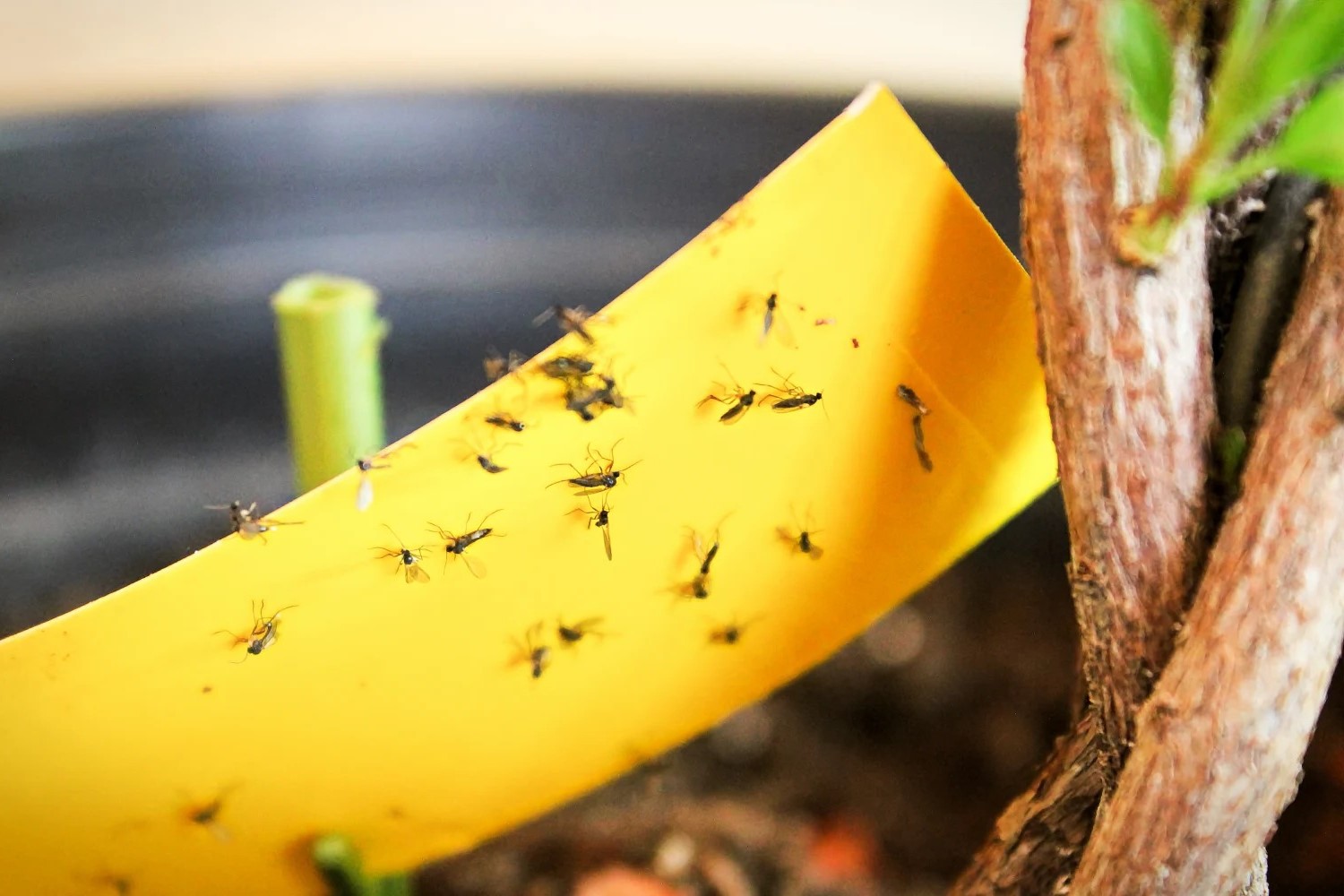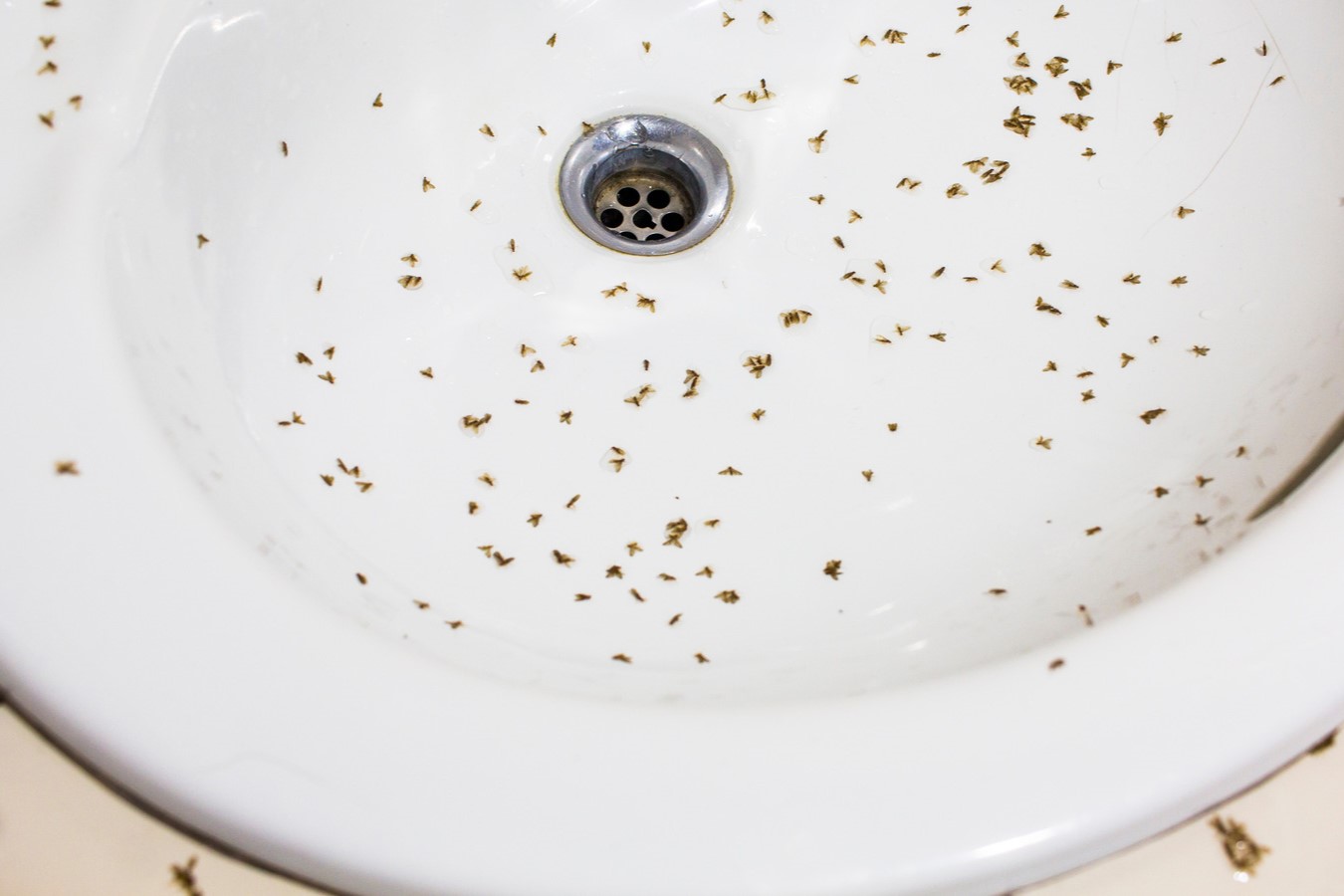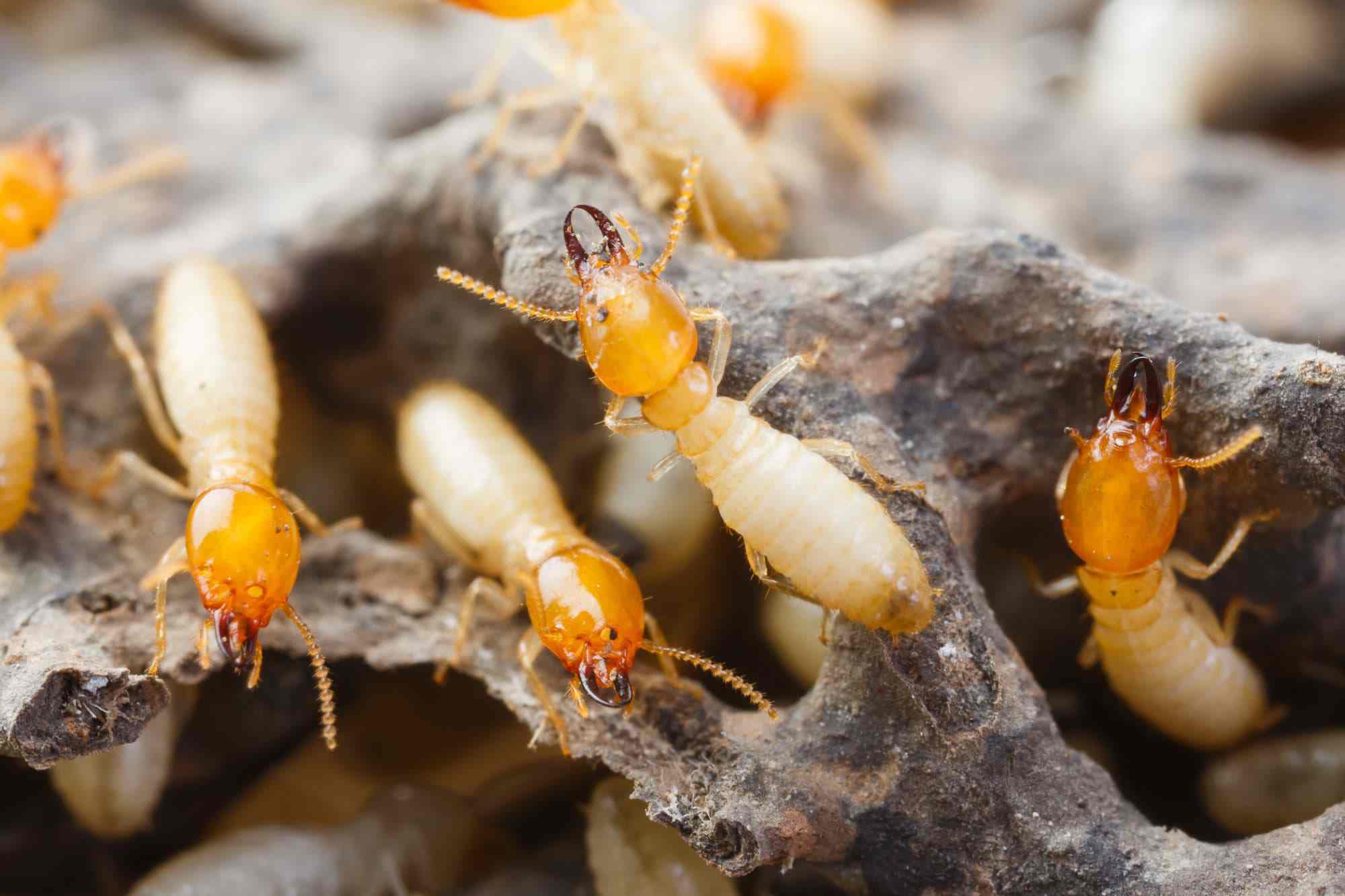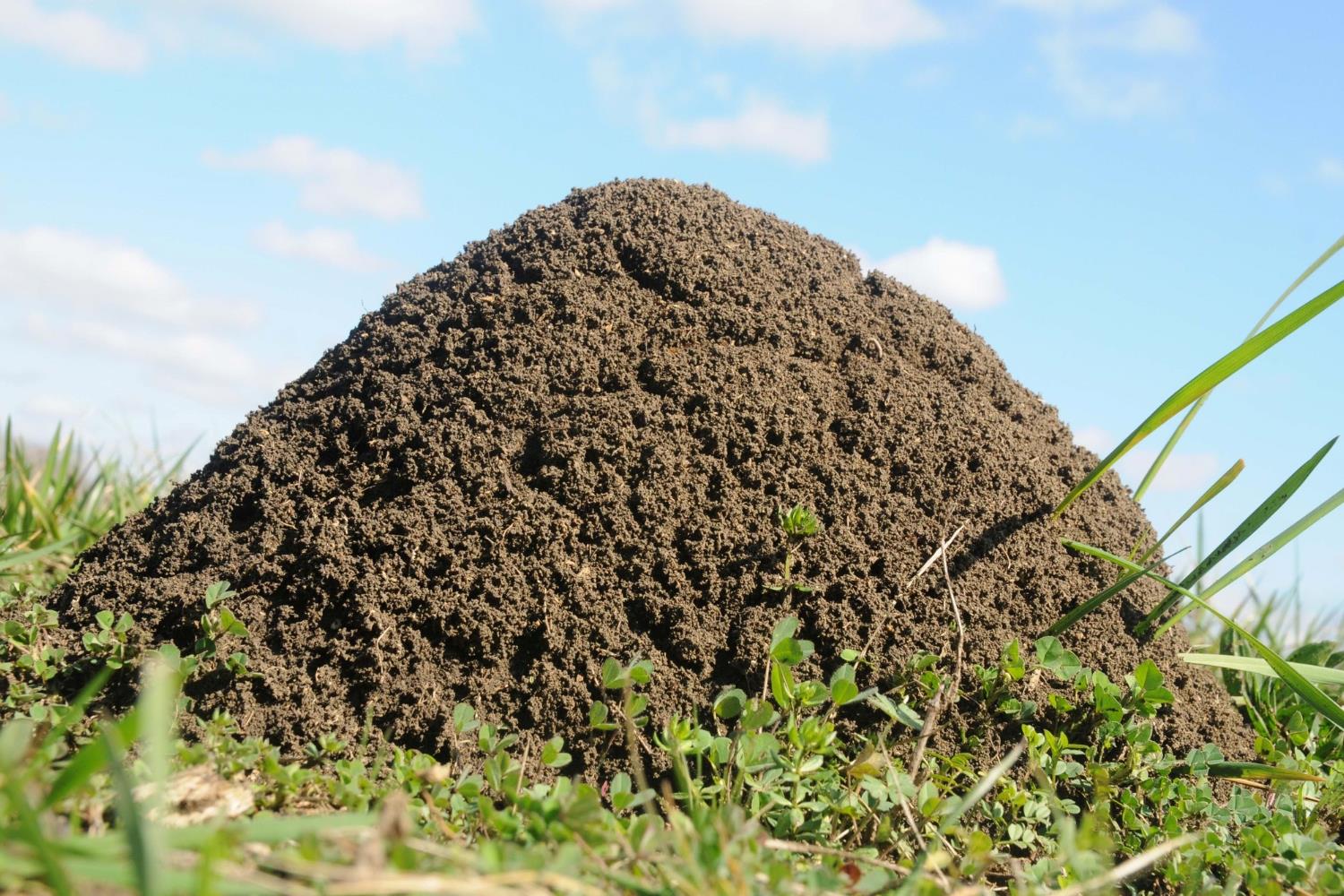Home>Home and Garden>How To Eliminate Fungus Gnats


Home and Garden
How To Eliminate Fungus Gnats
Published: March 7, 2024
Learn effective methods to eliminate fungus gnats from your home and garden. Discover practical tips and solutions for a fungus gnat-free environment.
(Many of the links in this article redirect to a specific reviewed product. Your purchase of these products through affiliate links helps to generate commission for Noodls.com, at no extra cost. Learn more)
Table of Contents
Introduction
Dealing with pesky pests in your home and garden can be a frustrating experience. One common nuisance that many plant enthusiasts encounter is the fungus gnat. These tiny, flying insects may seem harmless at first glance, but they can quickly multiply and wreak havoc on your beloved plants. Fortunately, there are effective methods for eliminating fungus gnats and preventing future infestations.
In this comprehensive guide, we will explore the ins and outs of dealing with fungus gnats, from understanding their behavior to implementing natural and chemical control methods. Whether you're a seasoned gardener or a novice plant parent, this article will equip you with the knowledge and strategies needed to combat these bothersome pests and protect your greenery.
Let's delve into the world of fungus gnats and discover the best approaches for eradicating them from your indoor and outdoor spaces.
Read more: How To Know If Toenail Fungus Is Dying
Understanding Fungus Gnats
Fungus gnats, scientifically known as Bradysia spp., are small, flying insects that belong to the Sciaridae family. These pesky pests are commonly found in moist environments, making indoor potted plants and greenhouse settings ideal breeding grounds for them. Fungus gnats are attracted to decaying organic matter, particularly damp soil, where they lay their eggs. The larvae hatch in the soil and feed on fungi, organic debris, and plant roots, posing a threat to the overall health of the plants.
These tiny insects are often mistaken for fruit flies due to their similar appearance, but they can be distinguished by their slender bodies and long legs. Fungus gnats typically measure around 1/8 inch in length and have a delicate, mosquito-like appearance. Their ability to swiftly dart around plants makes them a common nuisance for indoor gardeners and horticulturists.
Understanding the life cycle of fungus gnats is crucial for effective control and prevention. Adult gnats lay their eggs in the top layer of moist soil, and within a week, the larvae emerge and begin feeding on organic matter and plant roots. As they mature, the larvae pupate in the soil before emerging as adult gnats, perpetuating the infestation cycle.
Fungus gnats thrive in environments with high humidity and moisture, making overwatered plants and poorly drained soil particularly susceptible to infestations. Additionally, the presence of decaying plant matter and organic debris in the soil provides an ample food source for the larvae, contributing to the proliferation of these pests.
It's important to note that while fungus gnats are primarily a nuisance to plants, their presence can also indicate underlying issues with soil quality and drainage. By understanding the behavior and habitat preferences of these insects, gardeners and plant enthusiasts can take proactive measures to address the root causes of infestations and implement targeted control strategies.
In the next sections, we will delve into identifying fungus gnat infestations and explore effective prevention and control methods to combat these persistent pests. Understanding the intricacies of fungus gnats is the first step toward creating a thriving, pest-free environment for your beloved plants.
Identifying Fungus Gnat Infestations
Identifying a fungus gnat infestation is crucial for implementing targeted control measures and safeguarding the health of your plants. These pesky pests can often go unnoticed until their population reaches a noticeable level, making it essential to be vigilant in recognizing the signs of an infestation.
Signs of Infestation
-
Adult Gnats: The presence of adult fungus gnats hovering around potted plants is a clear indication of an infestation. These tiny, delicate insects are often observed darting around the soil surface and foliage, especially when disturbed. Their characteristic behavior of flying in short, erratic patterns near plants is a telltale sign of their presence.
-
Larvae in Soil: Careful examination of the top layer of soil may reveal the presence of translucent, legless larvae. Fungus gnat larvae are typically around 1/4 inch in length and have a slender, worm-like appearance. Their mobility within the soil and their tendency to feed on organic matter and plant roots make them a key indicator of an infestation.
-
Yellowing or Wilting Plants: As fungus gnat larvae feed on organic debris and plant roots, affected plants may exhibit signs of stress, such as yellowing leaves, stunted growth, or wilting. These symptoms can be attributed to the damage caused by the larvae, indicating a potential infestation.
-
Fungus Growth: The presence of fungal growth on the soil surface, often resembling a white or grayish web-like substance, can be a sign of excess moisture and organic decomposition—conditions that are conducive to fungus gnat infestations.
Monitoring and Observation
Regularly inspecting the soil and foliage of your plants is essential for early detection of fungus gnats. Utilizing yellow sticky traps placed near affected plants can help capture adult gnats, providing a visual indicator of the infestation's severity. Additionally, monitoring the moisture levels in the soil and adjusting watering practices can aid in preventing favorable conditions for these pests to thrive.
By familiarizing yourself with the signs of a fungus gnat infestation and actively monitoring your plants, you can promptly address the issue and implement effective control methods. In the following sections, we will explore preventive measures and both natural and chemical control strategies to combat fungus gnats and create an optimal environment for your plants to flourish.
Prevention and Control Methods
Preventing and controlling fungus gnat infestations requires a multifaceted approach that addresses the underlying factors contributing to their proliferation. By implementing proactive measures and targeted control strategies, you can effectively manage these pesky pests and create an environment that promotes the health and vitality of your plants.
Soil Drying and Drainage Improvement
Maintaining proper soil moisture levels is essential for preventing fungus gnat infestations. Overly moist soil provides an ideal breeding ground for these pests, allowing their larvae to thrive and feed on organic matter and plant roots. To combat this, allow the top layer of soil to dry out between watering sessions, as fungus gnat larvae require consistently damp conditions to survive. Additionally, ensuring adequate drainage in plant containers and using well-draining potting mixes can help mitigate excess moisture and discourage the proliferation of these pests.
Cultural Practices
Implementing cultural practices that promote plant health and vigor can contribute to reducing the susceptibility of plants to fungus gnat infestations. Regularly removing fallen leaves and debris from the soil surface eliminates potential food sources for the larvae, disrupting their life cycle. Furthermore, practicing proper sanitation by promptly removing decaying plant matter and maintaining a clean growing environment minimizes the conditions favorable to fungus gnats, thereby reducing the likelihood of infestations.
Biological Control Agents
Introducing beneficial biological control agents, such as predatory soil-dwelling organisms, can aid in managing fungus gnat populations. Predatory nematodes, specifically Steinernema feltiae, are effective natural enemies of fungus gnat larvae. These microscopic organisms seek out and parasitize the larvae, ultimately reducing their numbers and preventing future infestations. Incorporating these biological control agents into the soil can serve as a sustainable and eco-friendly method for combating fungus gnats while preserving the overall ecological balance of the growing environment.
Air Circulation and Ventilation
Improving air circulation and ventilation in indoor spaces can help deter fungus gnats, as these pests thrive in stagnant, humid conditions. Utilizing fans to promote airflow around plants and reducing humidity levels in enclosed areas creates an inhospitable environment for adult gnats to breed and lay eggs. By enhancing air circulation, you can disrupt the conducive conditions for fungus gnat infestations and create an environment that is less favorable for their reproduction.
Monitoring and Early Intervention
Regularly monitoring plants for signs of fungus gnat activity and promptly addressing any emerging issues is crucial for preventing infestations from escalating. By closely observing the soil and foliage, you can detect early indicators of gnat presence and take proactive measures to mitigate their impact. Utilizing yellow sticky traps near plants can help capture adult gnats, providing valuable insights into the severity of the infestation and guiding targeted control efforts.
By incorporating these preventive measures and control methods into your plant care routine, you can effectively manage fungus gnat infestations and create an optimal growing environment for your cherished plants. Taking a proactive and holistic approach to pest management not only safeguards the health of your greenery but also fosters a thriving and harmonious ecosystem within your home and garden.
Natural Remedies for Fungus Gnats
Combatting fungus gnats using natural remedies offers an eco-friendly and sustainable approach to pest management, aligning with environmentally conscious gardening practices. These natural remedies target fungus gnats at various stages of their life cycle, effectively reducing their population and preventing future infestations.
1. Beneficial Nematodes
Introducing beneficial nematodes, such as Steinernema feltiae, into the soil is a potent natural remedy for controlling fungus gnats. These microscopic organisms actively seek out fungus gnat larvae in the soil and parasitize them, ultimately leading to a decline in the pest population. Beneficial nematodes are a valuable addition to the growing environment, as they selectively target harmful pests while preserving the overall ecological balance of the soil.
2. Neem Oil
Neem oil, derived from the seeds of the neem tree (Azadirachta indica), serves as a versatile natural insecticide and repellent. When applied to the soil surface, neem oil disrupts the life cycle of fungus gnats, inhibiting the development of larvae and deterring adult gnats from laying eggs. Its organic composition and low environmental impact make neem oil an appealing choice for gardeners seeking natural solutions for pest control.
3. Sticky Traps
Yellow sticky traps are an effective and non-toxic method for monitoring and capturing adult fungus gnats. These bright yellow traps attract adult gnats with their color and sticky surface, preventing them from flying freely and laying eggs in the soil. Placing sticky traps near affected plants provides valuable insights into the severity of the infestation and aids in gauging the effectiveness of control measures.
4. Cinnamon Powder
Cinnamon powder, known for its antifungal properties, can be utilized as a natural deterrent for fungus gnats. Sprinkling a thin layer of cinnamon powder on the soil surface creates an inhospitable environment for the pests, inhibiting their ability to thrive and reproduce. Additionally, cinnamon acts as a natural fungicide, addressing any underlying fungal issues in the soil while deterring fungus gnat activity.
5. Soil Drench with Hydrogen Peroxide
A soil drench using diluted hydrogen peroxide can help combat fungus gnat larvae and improve soil conditions. When applied to the soil, hydrogen peroxide releases oxygen, which not only aerates the root zone but also targets the larvae by disrupting their habitat. This natural soil treatment promotes a healthier root environment and aids in reducing the population of fungus gnats.
By incorporating these natural remedies into your pest management strategy, you can effectively address fungus gnat infestations while minimizing the use of synthetic chemicals. Embracing natural solutions not only promotes a sustainable approach to gardening but also contributes to the overall well-being of your plants and the surrounding ecosystem.
Chemical Treatments for Fungus Gnats
When natural remedies and cultural practices alone are insufficient in managing fungus gnat infestations, targeted chemical treatments can serve as an effective means of controlling these persistent pests. It is important to approach chemical treatments with caution, ensuring that the selected products are safe for the specific plant species and the surrounding environment. Here are several chemical treatments commonly utilized for combating fungus gnats:
1. Insecticidal Soaps and Oils
Insecticidal soaps and horticultural oils offer a low-toxicity solution for controlling fungus gnats and other soft-bodied insects. These products work by suffocating and disrupting the cellular membranes of the pests upon contact, effectively reducing their population. When applying insecticidal soaps and oils, it is essential to cover the foliage and soil surface thoroughly, targeting both adult gnats and larvae.
2. Biological Larvicides
Biological larvicides, such as Bacillus thuringiensis subspecies israelensis (Bti), are microbial agents that specifically target the larvae of fungus gnats. When applied to the soil, these larvicides release toxins that are ingested by the larvae, ultimately leading to their demise. Biological larvicides offer a targeted and environmentally friendly approach to controlling fungus gnat populations, minimizing the impact on beneficial organisms and non-target species.
3. Systemic Insecticides
Systemic insecticides, available in granular or liquid formulations, are absorbed by the plant's roots and translocated throughout the vascular system. As adult fungus gnats feed on plant sap, they ingest the systemic insecticide, leading to their elimination. It is crucial to follow the manufacturer's instructions and safety guidelines when using systemic insecticides, ensuring proper application and minimizing potential risks to non-target organisms.
4. Growth Regulators
Insect growth regulators (IGRs) disrupt the development and reproduction of fungus gnats by targeting their life cycle stages. These chemicals interfere with the growth and molting processes of the larvae, ultimately inhibiting their ability to mature into reproductive adults. By incorporating growth regulators into pest management strategies, gardeners can effectively curtail the population growth of fungus gnats and prevent future infestations.
When considering chemical treatments for fungus gnats, it is imperative to prioritize the safety of plants, beneficial organisms, and the overall environmental impact. Additionally, adhering to proper application techniques and dosage guidelines is essential for maximizing the efficacy of chemical treatments while minimizing potential risks. By integrating targeted chemical treatments with natural remedies and preventive measures, gardeners can effectively combat fungus gnats and create a balanced and thriving growing environment for their cherished plants.
Conclusion
In conclusion, effectively managing and eliminating fungus gnats from your home and garden requires a comprehensive approach that encompasses understanding their behavior, implementing preventive measures, and utilizing targeted control methods. These pesky pests, with their affinity for moist environments and organic debris, can pose a threat to the health and vitality of your plants. By familiarizing yourself with the signs of infestation and proactively addressing conducive conditions, you can create an environment that is inhospitable to fungus gnats, safeguarding the well-being of your greenery.
Natural remedies, such as beneficial nematodes, neem oil, and cultural practices, offer sustainable and eco-friendly solutions for combating fungus gnats. These natural approaches not only target the pests at various life stages but also contribute to the overall ecological balance of the growing environment. Additionally, incorporating biological control agents and enhancing air circulation can aid in deterring fungus gnats, creating an optimal habitat for your plants to thrive.
In cases where natural remedies may be insufficient, targeted chemical treatments, such as insecticidal soaps, biological larvicides, and systemic insecticides, can serve as effective tools for managing fungus gnat populations. It is essential to approach chemical treatments with caution, prioritizing the safety of plants, beneficial organisms, and the surrounding ecosystem.
By integrating natural and chemical control methods, along with proactive preventive measures, you can effectively combat fungus gnats and create a harmonious and thriving environment for your beloved plants. Regular monitoring, early intervention, and a holistic approach to pest management are key components of maintaining a pest-free and flourishing home and garden.
Ultimately, by understanding the behavior and life cycle of fungus gnats and implementing targeted strategies, you can mitigate the impact of these persistent pests and cultivate a vibrant and healthy plant ecosystem. Embracing a proactive and informed approach to pest management empowers you to create an environment where your plants can flourish, free from the disruptions caused by fungus gnats.










